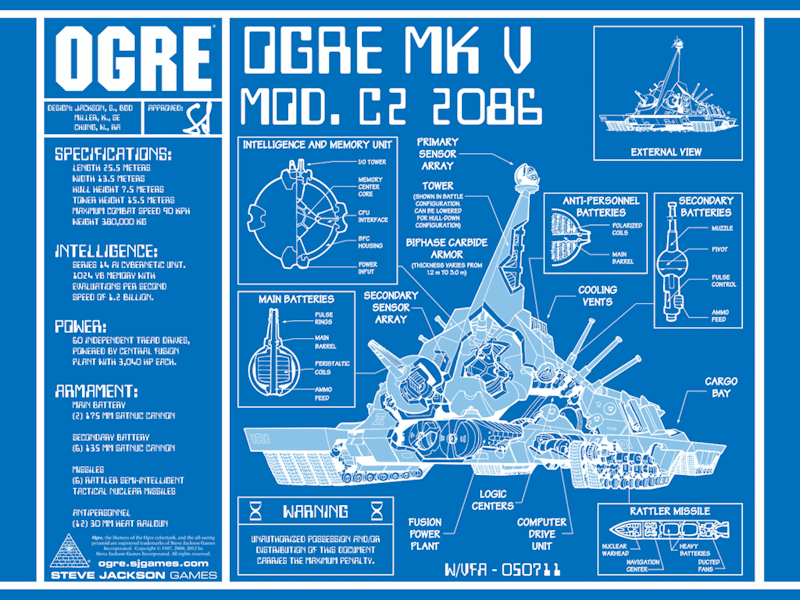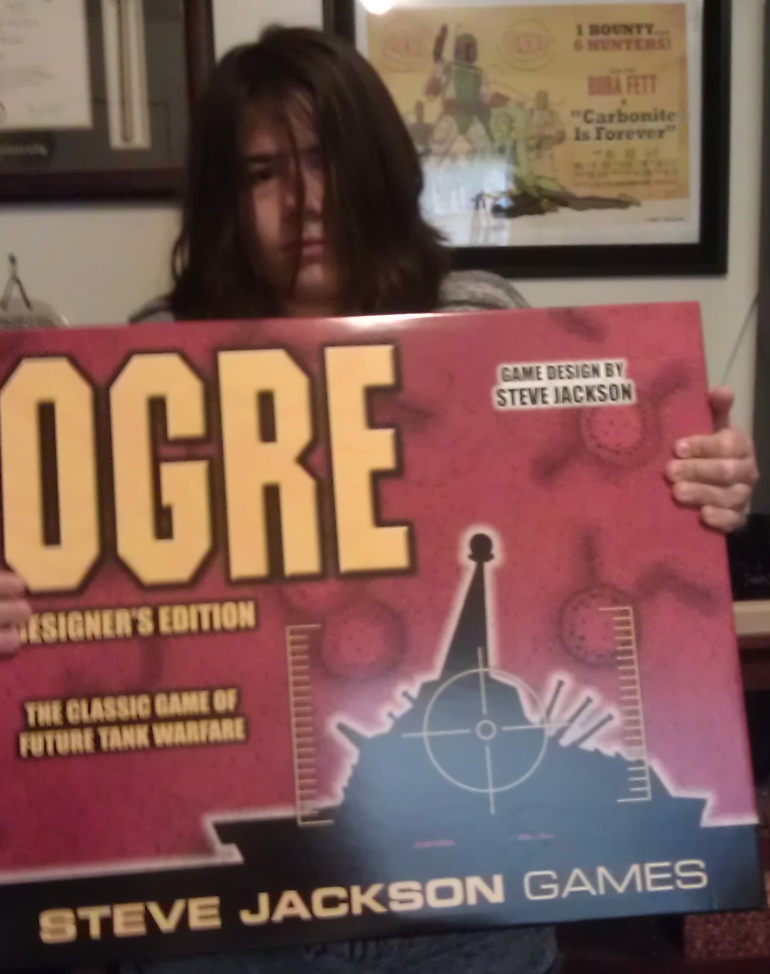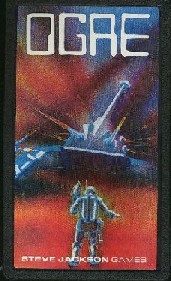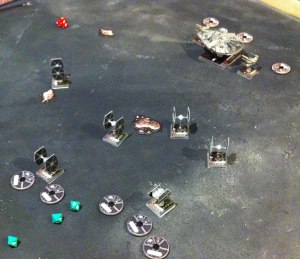
A Huge Release from Steve Jackson Games…and a Grognard Reflects
Ogre is a board-game about high-tech warfare in the future. It was originally produced in 1977, and was the first game Steve Jackson designed. I played this game back in the early 80’s, when it came in a tiny plastic box (smaller than a VHS video tape).
The new edition comes in at 28 pounds, with over a thousand counters! Its a game that owes its success to a loving fan base who donated over $900,000 via Kickstarter to see it developed. The recent re-release of Ogre is a love story between fans of all ages and a company that wanted to see its oldest product enjoyed again by the public.
Edit: And I wonder, now that this gigantic box has been sitting in my office for a week, would somebody critical of gamers call me a fetishist for paying such attention to an artifact like this? Would they think poorly of some of us old-school grognards who keep copies of edition after edition of old games on our bookshelves, maintaining thousands of little cardboard chits representing units Prussian artillery, Allied infantry, or Federation starships? Would someone on the outside our particular version of fandom see those yellowed boxes, old copies of typewritten rules and charts and imagine, at best, we’re maintaining a collection of fetishes that sit, sacred, inside weathered and fading cardboard boxes or on dusty shelves, never to be touched out of reverence for our favored activities of youth? Or would they see us, at worst, hoarders, unwilling or emotionally unable to let go of frivolity?
In Understanding Fandom, Mark Duffett cites Susan Pierce’s study where she separates the notion of a fetish (that represent a “metaphoric relation to the world”), and a souvenir,(a representation of something from the past). There is the implication the souvenir represents the path of a fan’s life. Duffett goes on to write about how the collection is used socially. “…items and information that fans accumulate almost always get used in a social sense.” Fans act as “archivists and curators” of their collections. He wrote about how some of these collections were displayed, how fans donated and shared with the public. However, I see another angle.
What is more representative of a social activity than a game? Its a shared experience, and an opportunity to create an event that not only passes the time, but memorializes a connection between the players. People who love games will reminisce about their experiences both fondly and critically, or share accounts of their victories and defeats. If it appears that we fetishize an old game, its because we want it preserved for the next bunch of kids, playing around a dining room table, recreating the battles at Remagen, or the conflicts in Israel, or even the trench run on the Death Star.
Duffett wrote how a collection (or an item in a collection) may be, “bounded within a particular part of a person’s identity.” They don’t represent the gamer’s desire for conflict; they represent the fan’s desire to share. I hope, many years from now, my kid (pictured above, mopey because his dad is asking him to hold a huge box for a picture) pulls out my old collection and shares the way my friends and I did. And maybe he’ll pay to a Kickstarter campaign to see some of the stuff he loved when he was younger put back into print. And he’ll be just as excited as this old soldier to relive a happy past.



Mike, you bring up a good point about games as cultural artifacts. I’m reading a book that covers that idea called Reality Is Broken; I’d definitely recommend it. Also, I’m sure that $900,000 production cost for a “simple” board game will surprise some people. I remember earlier this year when fans started grabbing their torches and pitchforks when the developers of the game Skullgirls launched a $150,000 goal Kickstarter campaign to add a single to their game (they eventually raised over $800,000, lol). In any event, it provided fans with a sense of just how shockingly expensive it can be to build these creative works.
I’ve seen a video where one of the biggest issues about crowdsourcing is this, right from that article:
$10,500: IndieGoGo and Payment Processing Fees
$20,500: Manufacturing and Shipping Physical Perks
31 grand! What a waste!
Crowdsourcing is a neat way to invigorate a struggling cottage industry to make some new products, but eventually, I can’t help but feel like some people are walking away with bad tastes in their mouths.
There was a fair amount of criticism about Steve Jackson going to Kickstarter for this project; he has an established company, and retailers were afraid of loosing sales. SJG said, though, they could never have gotten the project into as many hands as they did without raising the money like this.
You bring up some fascinating points here, Mike, many of which go back to the old perception of games and fans as geeks, nerds, and so on. When you mentioned the old versions of games on the shelves, it made me think of people, like myself, who have multiple copies of books, many rare or with author signatures. Those people may be collectors or bookworms depending on context. You might be interested in the book, Evocative Objects: Things We Think With edited by Sherry Turkle. The first section is on Objects of Design and Play.